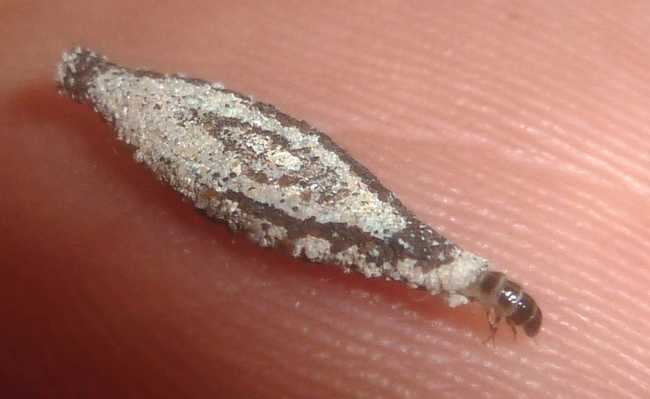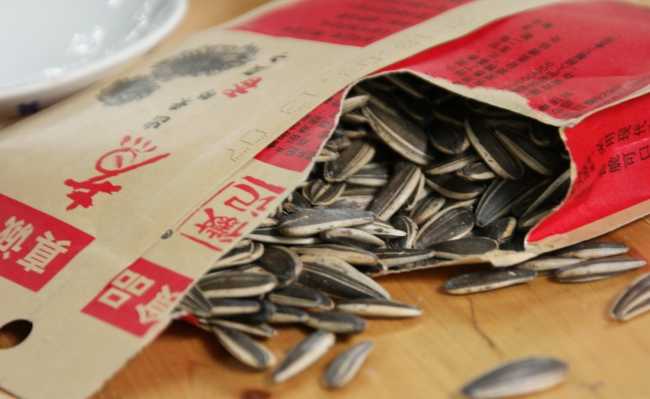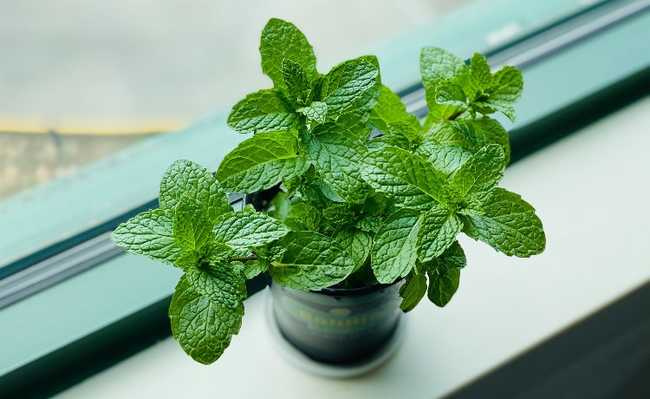What is air pollution? Know causes and types
Understand the causes and consequences of air pollution for human health and the environment

Air pollution is the introduction of any substance that, due to its concentration, can become harmful to health and the environment. Also known as atmospheric pollution, it refers to the contamination of the air by gases, liquids and solid particles in suspension, biological material and even energy.
- Learn about air pollutants and their effects
This type of pollution occurs with substances called atmospheric pollutants and exist in the form of gases or particles from natural sources (volcanoes and fog) or artificial sources produced by human activities. According to a 2014 World Health Organization (WHO) study, air pollution caused the death of more than 7 million people worldwide in 2012, killing more than AIDS and malaria combined.
air pollution

かねのり 三浦 image by Pixabay
It may sound incredible, but air pollution was already present in Ancient Rome, when people burned wood, for example. However, the Industrial Revolution dramatically increased the human impact on air quality, as the intensity of coal combustion increased dramatically in the 19th century, particularly in Great Britain. The burning of coal dumped tons of atmospheric pollution, causing damage to the population, who suffered from respiratory diseases, responsible for thousands of deaths at the time.
Among the remarkable episodes that resulted from air pollution, the situation in England in the 1950s stands out. In 1952, due to particulate pollution and sulfur compounds released by industries in the burning of coal, in addition to bad weather conditions that contributed to the non-dispersal of this pollution, around four thousand people died in London from respiratory problems within a week. In the months following this event, which was known as big smoke (Big smoke, in free translation), more than 8,000 people died and about 100,000 others became sick.
Types of air pollution
Air pollution is a generic name we use for a wide range of substances. Pollutants can be classified into two types: primary pollutants and secondary pollutants.
Primary pollutants are those released directly into the atmosphere from anthropogenic and natural sources. Secondary pollutants are those that are products of chemical and photochemical reactions that occur in the atmosphere involving the primary pollutants. Let's get to know the main air pollutants:
Carbon Monoxide (CO)
A colorless, odorless and toxic gas. Mainly produced by incomplete burning of fuel. It interferes with the transport of oxygen in our body, which can cause suffocation. Learn more in the article: "What is carbon monoxide?".
Carbon Dioxide (CO2)
It is a fundamental substance for living beings. Vegetables use carbon dioxide to carry out their photosynthesis, a process in which they use solar energy and CO2 to produce energy. The gas is produced in the process of cellular respiration, but it has other sources, which are the cause of much of the air pollution, such as the decomposition process and the burning of fossil fuels. This gas is currently well known for being one of the causes of the greenhouse effect. This is due to the fact that CO2 absorbs part of the radiation emitted by the earth's surface, trapping heat, resulting in an increase in temperature. Understand the article better: "Carbon dioxide: what is CO2?".
Chlorofluorocarbons (CFCs)
They used to be issued from products such as air conditioners, refrigerators, sprays of aerosol, etc. These compounds are currently banned throughout most of the world. When in contact with other gases, CFCs damage the ozone layer, being largely responsible for its hole, thus allowing ultraviolet rays to reach the Earth's surface, causing problems such as skin cancer. See more about the replacement of CFCs in the article: "HFC: CFC replacement, gas also has impacts".
Sulfur Oxides (SOx)
The most harmful is sulfur dioxide (SO2), which is produced in various industrial processes and by volcanic activities. In the atmosphere, sulfur dioxide forms sulfurous acid, causing acid rain.
Nitrogen Oxides (NOx)
Nitrogen dioxide (NO2) in particular is a major factor in air pollution. These oxides are highly reactive gases, formed during combustion by microbiological action or by lightning. In the atmosphere, NOx reacts with volatile organic compounds and carbon monoxide to produce tropospheric ozone. It is also oxidized to nitric acid, which contributes to acid rain. Understand the article better: "Nitrogen dioxide? Know NO2".
Volatile Organic Compounds (VOCs)
These elements that make up air pollution are organic chemicals emitted from various sources, including fossil fuel burning, industrial activities, and natural emissions from vegetation and fires. Some VOCs (or VOCs) of anthropogenic origin, such as benzene, are carcinogenic pollutants. Methane is a volatile organic compound that contributes to the greenhouse effect and is about 20 times more potent than carbon monoxide. Learn more in the article: "VOCs: learn about volatile organic compounds".
Ammonia (NH3)
Mainly issued by agriculture due to the use of fertilizers. In the atmosphere, ammonia is a type of air pollution that reacts to form secondary pollutants.
Particulate Material (PM)
They are fine particles of suspended solids or liquids. This material occurs naturally from volcanic eruptions, sandstorms, fog formation and other natural processes. Human action produces PM in industrial activities, mining and combustion of fossil fuels, among others. In the atmosphere, this material is harmful to health. The smaller the particle, the greater the effects caused. Some effects caused by particulate matter are respiratory and heart problems. Understand more in the article: "The dangers of particulate matter".
Tropospheric Ozone (O3)
Despite being extremely necessary in the atmosphere to block solar radiation, the ozone that is formed in the troposphere (closer to the Earth's surface), from reactions with other pollutants, is a form of air pollution that causes several damages to the our health, such as irritation and respiratory problems. Understand better what this gas is in matter: "Ozone: what is it?".
Causes of air pollution
There are several activities and factors that are causes of air pollution. These fonts can be divided into two categories:
natural sources
- Dust from natural sources, such as from desert areas;
- Methane emitted in the digestion process of animals. This emission is increased by human action due to the large number of animals raised for food, such as cattle, for example, which corresponds to a large part of methane emissions into the environment;
- Smoke and carbon monoxide emitted by natural fires;
- Volcanic activity, which emits various pollutants such as carbon dioxide, sulfur dioxide and ash in large quantities, which can cause terrible damage;
- Microbiological activity in the oceans, releasing sulfur gases;
- Radioactive decay of minerals (rocks);
- Plant emissions of volatile organic compounds (VOCs);
- Organic matter decomposition.
Anthropogenic sources (caused by humanity)
- Factories, power plants, incinerators, furnaces and other stationary sources. Locations that burn fossil fuels or biomass such as wood;
- Automotive vehicles such as cars, motorcycles, trucks and planes. Transport contributes about half of carbon monoxide and nitrogen oxide emissions;
- Controlled fires in agriculture and forest management. In Brazil, this practice is responsible for about 75% of carbon dioxide emissions;
- Aerosols, ink, sprays hair and other solvents;
- Decomposition of organic waste, which generates methane;
- Ammonia emission from the use of fertilizers;
- Mining activity.
Effects of air pollution
Air pollution can have a huge impact in two major areas: human health and the environment. Among the main effects of air pollution are respiratory diseases and environmental problems.
Effects of air pollution on human health
- Irritation in the throat, nose and eyes;
- Breathing difficulties;
- Cough;
- Development of respiratory problems;
- Worsening of heart or respiratory problems such as asthma;
- Decrease in lung capacity;
- Increased chance of heart attacks;
- Development of different types of cancer;
- Damage to the immune system;
- Damage to the reproductive system.
Environment
The impacts on the environment depend on the type of air pollution and arrive on a global scale. Among the main effects of air pollution on the environment, the following stand out:
Acid rain
Causes the acidification of the atmosphere. In water bodies it provides water acidification, causing the death of fish, and in soils it causes the modification of its physicochemical properties. In forests, trees are damaged by acid rain, as are buildings and structures in the city that can corrode. For these reasons, several countries have started to take actions to reduce the effects of acid precipitation, such as a reduction in the amount of sulfur present in fuels.
Decrease in the ozone layer
Stratospheric ozone forms a layer that protects life on Earth from the emission of ultraviolet rays. However, with their destruction due to chemicals released into the atmosphere by humanity, these rays manage to cross the layer, which causes an increase in the amount of UV radiation, increasing, in humans, the risk of developing skin cancer and other problems. Ultraviolet rays also harm agriculture, because some plants, such as soybeans, are sensitive to this type of radiation.
darkening the atmosphere
With air pollution, clarity and visibility are diminished. This effect interferes with the water evaporation process, because the formed clouds absorb the heat emitted by the sun, a fact that can mask global warming.
Greenhouse effect
The greenhouse effect itself is a fundamental process for life on Earth, as it keeps the planet warm. But there are theorists who argue that the significant increase in greenhouse gas emissions, associated with other actions also promoted by human activity, such as the deforestation of forests, are decisive in the unbalance of the process, generating greater energy retention and an increase in the effect greenhouse, with the warming of the lower atmosphere and an increase in the planet's average temperature and possible environmental distortions. Global warming has become one of the Earth's biggest problems, with effects that could be catastrophic.
eutrophication
The various types of air pollution end up being deposited in water bodies by precipitation, causing a change in the nutrients present in these systems. Some algae can be stimulated in the presence of pollutants such as nitrogen, which causes their development and a consequent decrease in the amount of dissolved oxygen in the water, leading to fish death.
Effects on animals
Like humans, animals suffer from health problems caused by air pollution.
Air Quality Index
The Air Quality Index defines the maximum limit for the concentration of a certain pollutant in the atmosphere. This concentration limit is a standardized value, which varies according to the agency or entity that defines it. Its purpose is to inform the population about the air quality in a given region in an accessible language. Measurements are made at monitoring stations that measure the concentration of pollutants, especially the concentration of ozone and particles at ground level. Generally, this Air Quality Index is made available in real time at the monitoring station by the agency that takes care of its measurement in the region. In Brazil, the standards were established by the Brazilian Institute for the Environment and Renewable Natural Resources (Ibama) and approved by the National Environment Council (Conama), through Conama resolution 03/90.
Tips on how to contribute to a reduction in air pollution
Everything we consume or do leaves a trail on the planet. That's why we've put together some simple tips to reduce your footprint on air pollution:
- Try not to use your car to get around. Going to work by public transport or using an alternative means of transport, such as the bicycle, are actions that greatly reduce your contribution to the emission of pollutants;
- Turn off lights, TV and computer when you leave the house. Save energy, as its production contributes to global warming;
- Consume locally produced products, this will greatly reduce pollutant emissions from product transport;
- Try to recycle your household waste, thus reducing the consumption of energy and raw materials needed to manufacture new products. Check the recycling points closest to your home;
- Choose products from environmentally responsible companies.








